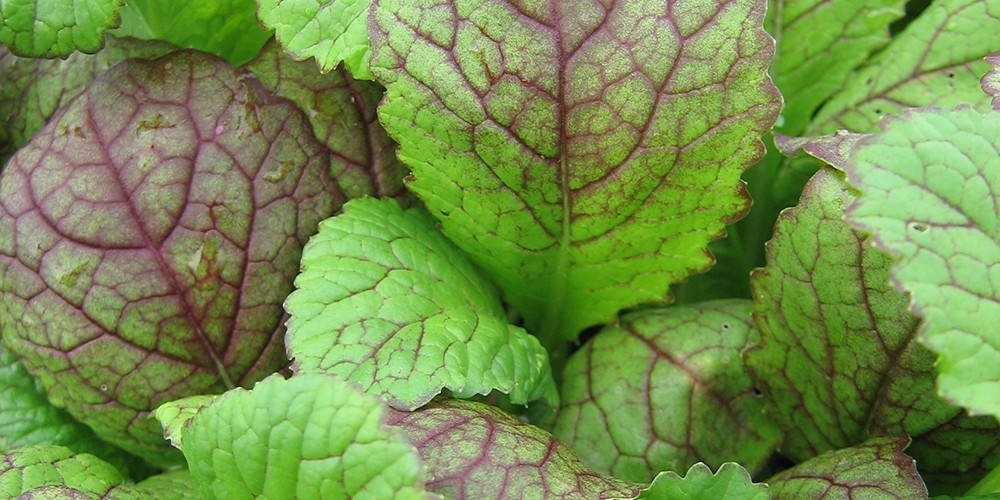If you are growing mustard leaves for the first time this autumn/winter, then they should be large enough for you to start harvesting from them by now. If you’re unsure how to use them in the kitchen, have a quick read of this and all will be explained!
Our varieties of mustard leaves include:
- Frills Mustard (doesn’t need to be chopped up really as the leaves are quite small)
- Giant Red Mustard (chop up larger leaves)
- Salad Mustard (chop up larger leaves)
They are all punchy in flavour, as you would expect of a mustard leaf. Some of you may find the flavour a little too intense when the leaves are eaten raw in salads, others will love it. Our suggestion is to use the smaller leaves for salads, and balance them out with other non-mustard leaves – wild rocket, mizuna, lettuces, baby leaf chard/spinach – and you’ll find they add a really lovely boost of flavour without being overpowering. If you’re using the larger leaves, chop them up quite finely to use in salads and, again, mix up with other leaves.
In your cooking, you can largely treat them like spinach. Chop up larger leaves and use baby leaves whole. If you’re cooking them as a side dish of greens, we’d recommend mixing them with kale, spinach or chard. You can steam them all together, or wilt them down in a pan with a little olive oil or butter. Add a little seasoning and you’re away!
You can also throw a handful of mustard leaves into a stew, curry, pasta dish or stir-fry at the very end. Again, if the leaves are on the larger side chop them up roughly first, but baby leaves can go in whole. They’ll wilt down quickly so a handful or two won’t actually overpower the dish, even though it may look like a lot when they are uncooked.
When cooked, the intensity of flavour is not so strong, although they will still produce a mustardy punch. Whether cooked or raw, they are great with meat, particularly pork and chicken, great with other leafy greens and good for adding a splash of green to one-pots. They’re super healthy too!

